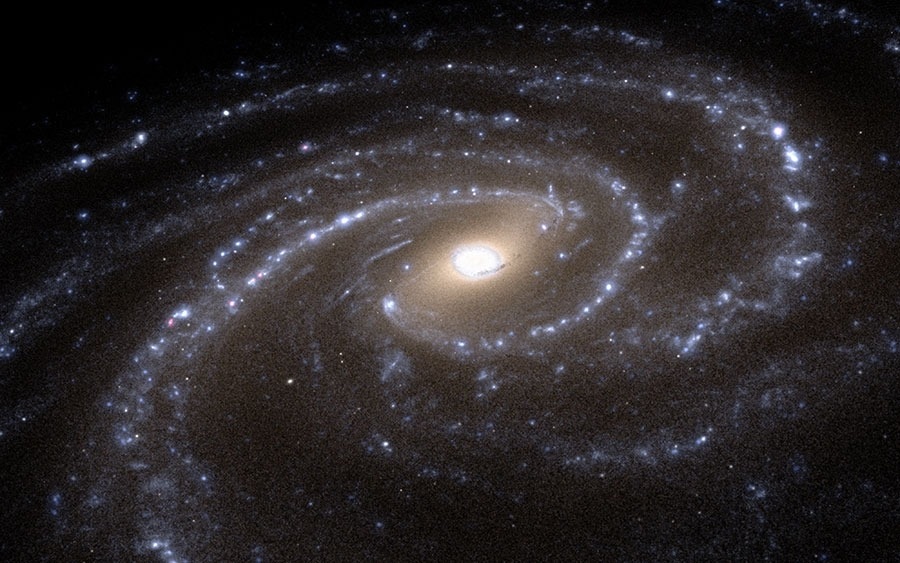Reviewed by Mila PereraSep 12 2022
A new simulation run on the world's most powerful astronomy-focused supercomputer has developed a testable hypothesis to explain how the Milky Way’s bar appears. This scenario will be compared to data from past, present, and future space telescopes to help shed light on the Milky Way's development.
 A Milky-Way-like galaxy simulated by the supercomputer ATERUI II. Stars are clustered in a bar shape near the center of the galaxy. Image Credit: Junichi Baba, Hirotaka Nakayama, 4D2U Project, NAOJ
A Milky-Way-like galaxy simulated by the supercomputer ATERUI II. Stars are clustered in a bar shape near the center of the galaxy. Image Credit: Junichi Baba, Hirotaka Nakayama, 4D2U Project, NAOJ
The structure of the Milky Way Galaxy is being gradually revealed by astronomy. Researchers know it is a disc galaxy with two or four armed spirals connected by a straight bar in the center.
Currently, researchers know that the inner section of the bar has a “nuclear bulge,” which is disk-shaped and situated in the center of the galaxy, as well as a “peanut-shaped bulge,” or area where the bar is denser and sticks out above and beneath the midplane of the galaxy. Some other galaxies, but not all, display some of the same two-type bulges.
Astronomers have been puzzled as to how these bulges formed. ATERUI II, the most powerful astronomy-focused supercomputer in the world, was used by a team at the National Astronomical Observatory of Japan (NAOJ) under the direction of Junichi Baba to explore one scenario for a Milky-Way-like galaxy.
The group's simulation includes the galaxy's gas and stars, making it the most thorough and realistic to date. It also considers the demise of stars through supernovae and the creation of new ones from gas.
The development of a bar facilitates the flow of gas into the galaxy’s center, where it sparks the birth of new stars. Therefore, it is plausible to theorize that the galaxy’s nuclear bugle comprises newly formed stars.
However, because the bar is so efficient at directing gas towards the center, simulations suggest that there are hardly any new stars in the bar outside the nuclear bulge. This proves that a peanut-shaped bulge in the bar does not form due to the overconsumption of gas.
The team ultimately discovered that some stars could be propelled into orbits that carry them above and below the mid-plane by gravitational interactions.
The simulation’s ability to create a testable scenario is its most fascinating feature. All the stars in the peanut-shaped bulge must have formed before the bar since it does not pick up any new ones. The bar also directs the gas into the center, where it forms multiple young stars.
The nuclear bulge’s stars will have nearly exclusively been born after the bar developed. This implies that there will be a distinct age difference between the stars in the nuclear bulge and those in the peanut-shaped bulge. This break occurred when the bar first appeared.
Researchers will be able to ascertain the motions and ages of the stars and test this hypothesis using data from the European Space Agency’s Gaia probe and Japan’s upcoming JASMINE satellite.
Astronomers can determine the age of the Milky Way Galaxy’s bar if they can distinguish between the ages of the stars in peanut-shaped and nuclear bulges. This will show that overconsumption of gas is not the cause of the bulges.
Journal Reference:
Baba, J., et al. (2022) Age distribution of stars in boxy/peanut/X-shaped bulges formed without bar buckling Get access Arrow. Monthly Notices of the Royal Astronomical Society. doi.org/10.1093/mnras/stac598.